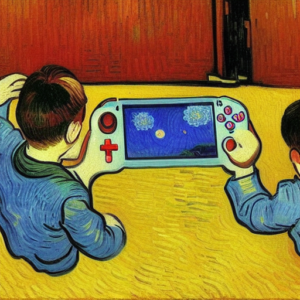
In some households, summer means more screen time for children, so it’s important to measure the impact of screen time on eye health.
The fact that young people are spending more time indoors, playing computer games, watching television and less time outdoors raises concerns, especially about damage to their eyes.
However, according to the University of Michigan C.S. Mott Children’s Hospital National Children’s Health Survey, only 50% of parents agree that screen use has a significant impact on their child’s eye health.
According to Sarah Clark, co-director of the Mott survey, “Many parents may not be aware of the short- and long-term health risks associated with excessive screen use, particularly the impact on children’s eyes.”
“Our results indicate that some parents may have misguided beliefs about the behaviors that affect their child’s eye health and vision, as well as how to reduce the risks.”
Based on responses from 2,002 parents of children ages 3 to 18, the nationally representative report was conducted in April.
According to some experts, young people who spend more time indoors and less time outdoors are more likely to develop myopia, which can lead to serious eye problems in the future. Over the past 30 years, there has been a sharp increase in the prevalence of myopia in children.
Research is still ongoing, but studies show that spending time outdoors can prevent myopia.
Because exposure to natural light promotes eye growth, Clark advised parents to encourage their children to spend at least one to two hours outdoors each day.
“Family rules should be followed by parents to ensure that children have enough time away from screens each day. This is especially crucial during the summer, when children may have less scheduled downtime since they are not in school.”
In addition, several studies have linked close work, such as reading or using a tablet, to an increased risk of myopia.
According to Olivia Killeen, M.D., an ophthalmologist at U-M Health Kellogg Eye Center, who helped write the article, young people with this problem often become increasingly nearsighted over time. “This is a crucial time to think about myopia problems in children,” she said.
The most important indicator of severe myopia later in life is the age at which myopia first appears.
Use of eye protection to reduce risks to children’s eyes
Protecting young eyes from the sun’s rays is another aspect of eye health that is often overlooked.
Only two in five parents surveyed said their child should wear eye protection when outdoors, and less than one-third said wearing sunglasses outdoors has a significant influence on children’s vision and eye health.
Clark said children should wear wide-brimmed hats or sunglasses when outdoors to reduce the risk of UV damage, which can lead to eye problems later in life.
While parents often make sure their children’s skin is covered with sunscreen, Clark said they may not think to protect their eyes from the sun as well.
Less than one-third of parents surveyed reported that their child wears goggles or glasses during contact sports. Many parents surveyed also omit procedures to limit eye injuries during activities that involve the potential for objects to impact the child’s eye at high speed or with force.
To find safe, comfortable eyewear for activities such as lacrosse, tennis, baseball and softball, and basketball, Clark advises parents to consult their child’s health care provider.
However, the majority of parents surveyed agree that children and teens should wear safety glasses or goggles when engaging in activities that increase the risk of eye injury, such as using tools or playing shooting sports like paintball or Nerf guns.
After screen time, reading in low-light conditions, distance between children and the TV or screen, diet and blue light from screens were the most common factors described by parents as affecting their children’s vision and eye health.
According to Clark, some parents may still adhere to previous generations’ recommendations for protecting children’s eyes. While reading in dim light or watching television up close can strain or tire the eyes, it does not create long-term eye damage or problems.
Less than one-third of parents report that their children wear glasses that block blue light. The amount of blue light may not be harmful to the eyes, but it can affect circadian rhythms and make it harder for children to sleep.
Experts advise children:
- to turn off their blue-light screens at least an hour before bedtime.
- regular eye examinations to identify problems at an early stage
More than a quarter of parents say their children have been tested at school or daycare, while four in five say their child has had a vision test at a doctor’s or family physician’s visit.
The majority of parents think their child’s health insurance covers all or part of the expense of eye doctor visits, while 9% say it does not and 7% are unsure. Parents who report not having coverage for eye doctor visits are less likely to report that their child has seen an eye doctor in the past two years than parents who report having full or partial coverage.
Only one in seven parents report that their child has seen an eye doctor or had a vision test in the past two years.
Children should have an eye exam at least every two years to ensure that their eyes are developing normally, according to Clark.
Early detection and treatment of visual difficulties is crucial, as untreated disorders can ultimately lead to significant eye pathology, such as permanent vision loss.
Screens can also have beneficial effects!